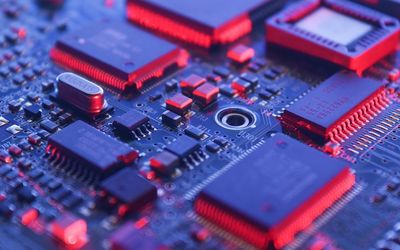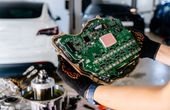Onsemi RSL15 Evaluation and Development Board
A development and evaluation board for RSL15 Software Development Kit.
Technical Specifications
| Product Category | Bluetooth Development Tools |
| Frequency | 2.4 |
| Series | RSL 15 |
| Power Supply | Battery and USB-C |
| Operating Voltages | 1.2 to 3.0 |
| Applications | Building Control & Automation, Connected Lighting |
Overview
The comprehensive software development kit features libraries, codes, mobile applications, and development tools to facilitate Android and iOS applications. It’s straightforward to start simply by unzipping the RSL15 documentation package. There is an installation guide to help the user get started with the RSL15 SDK.
Smart Power Management Features
The onsemi RSL15 development board runs on a standard 3.0 V power supply. It features a CR2032 battery holder making it a standalone development board. Therefore, it’s pretty useful for portable applications in a lab or anywhere else. The board can automatically switch between USB and battery power supplies and operates within a voltage range from 1.2V to 3.6V. Additionally, a USB connection is regulated from 5V down to 3.0V.
Also, it harnesses the power of Smart Sense mode that prevents excessive power while retaining the performance levels. It keeps some digital and analog channels active while ensuring low power consumption.
The board also features an embedded RF antenna integrated with necessary filtering networks to provide clean and noise-free signals to the microprocessor board. There are optimal UFL connectors for conducted RF connections.
The board facilitates smooth power measurement features. Moreover, it features isolation tools to prevent current leakages from external devices from reaching the RSL15 via an 8-pin dip switch. The user can download new firmware.
Simplified Code Downloading with J-Link On Board Technology
The onsemi RSL15 Evaluation board features an onboard SEGGER J-Link Technology that allows users to download and debug codes easily. There is a 10-pin JTAG debug port for simplified debugging operations.
Moreover, the board features numerous test and GND points for quicker troubleshooting, development, and testing procedures. A 0.1-inch standard header allows access to all the RSL15 interfaces.
In the default state, the onsemi RSL15 Evaluation board is configured to work in the second mode of communication. The board features a couple of communication modes. Firstly, there is a USB-C 2.0 port labeled as the Jt6 connector. This is connected to the J-link onboard solution for SWJ-DP that allows debugging up to 4MHz. Secondly, there is a TC2050-IDC connector which is the J8 header. This connector is used for programming the Arm Cortex-M4 processor via J-link firmware.
Also, the board features the DEBUG-EN header that controls the communication between the JLink OB and the RSL15 EVB. Once disabled, the board prevents the use of excessive power and supports accurate power measurements.
Thanks to comprehensive power management applications and enhanced communication features, the evaluation board is a useful option for power-related control applications like building automation and control, automatic light setups, etc.
Where to find it

Mouser Electronics
Mouser Electronics is a worldwide leading authorized distributor of semiconductors and electronic components.








